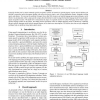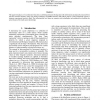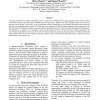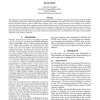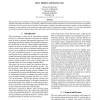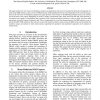LREC
2008
14 years 27 days ago
2008
In this paper we describe ANNALIST (Annotation, Alignment and Scoring Tool), a scoring system for the evaluation of the output of semantic annotation systems. ANNALIST has been de...
LREC
2008
14 years 27 days ago
2008
Language models used in current automatic speech recognition systems are trained on general-purpose corpora and are therefore not relevant to transcribe spoken documents dealing w...
LREC
2008
14 years 27 days ago
2008
This paper introduces a new architecture that aims at combining molecular biology data with information automatically extracted from scientific literature (using text mining techn...
LREC
2008
14 years 27 days ago
2008
This paper describes the evaluation methodology used to evaluate the TC-STAR speech-to-speech translation (SST) system and their results from the third year of the project. It fol...
LREC
2008
14 years 27 days ago
2008
This paper presents a general methodology to mapping EuroWordNets (Vossen, 1998) to the Suggested Upper Merged Ontology (SUMO; (Niles and Pease, 2001)), and we show its applicatio...
LREC
2008
14 years 27 days ago
2008
Open answers in questionnaires contain valuable information that is very time-consuming to analyze manually. We present a method for hypothesis generation from questionnaires base...
LREC
2008
14 years 27 days ago
2008
While the Web is facing interesting new changes in the way users access, interact and even participate to its growth, the most traditional applications dedicated to its fruition: ...
LREC
2008
14 years 27 days ago
2008
This paper discusses the problem of utilising multiply annotated data in training biomedical information extraction systems. Two corpora, annotated with entities and relations, an...
LREC
2008
14 years 27 days ago
2008
This paper describes a Name Matching Evaluation Laboratory that is a joint effort across multiple projects. The lab houses our evaluation infrastructure as well as multiple name m...
LREC
2008
14 years 27 days ago
2008
This paper outlines the new resource technologies, products and applications that have been constructed during the development of a multi-modal (MM hereafter) corpus tool on the D...

